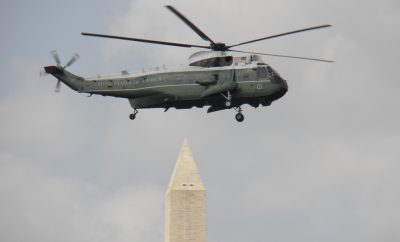 Image courtesy of [Rory via Flickr]
Image courtesy of [Rory via Flickr]
World
Middle East Politics: What Issues are Affecting the Region?
Politics in the Middle East have long been as fluid as the sands which make up much of the region. From the crusades to colonialism to the present, many political players have vied for power and found at best only temporary success. Since the discovery of oil in the region in the early twentieth century, politics have become mixed with business; however, other considerations have more recently come into play such as extremism, revolution, and non-state actors. Couple these with the long-standing animosity between major regional powers such as Iran, Israel, Egypt, and Saudi Arabia and the Middle East seems like a political powder keg waiting to explode. In addition, there has been almost constant intervention by foreign countries, most notably the United States. Together all these events have turned the politics of the region into one of the world’s most difficult jigsaw puzzles. Learn more about the most pivotal issues currently embroiling the region–although this is by no means an exhaustive list–as well as their root causes and possible solutions.
Brief History of the Middle East
The history of the Middle East is extremely rich. As one of the starting points for civilization between the Tigris and Euphrates rivers, settlement has existed continuously for thousands of years. These years saw the rise and fall of several empires such as the great Caliphates, and more recently the Ottoman Empire.
The region is also home to three of the world’s most prominent religions: Christianity, Judaism, and Islam. Islam in particular has played a pivotal role in shaping the region’s politics. So too did the great schism in Islam when it split into two factions–Shiites who viewed Muhammad’s true successor to be his son-in-law Ali and Sunnis who believed the next leader of Islam should be elected. Sunnis eventually won the struggle and today are the majority worldwide.
More recently the Middle East has been home to incursions from western powers, from the time of the crusades to the present. In fact, the way the present Middle East is constructed probably owes more to European influence, namely through the Sykes-Picot treaty between Britain and France that divided the region controlled by the Ottomans into respective spheres of influence of those two nations following WWI. When those powers eventually left, the power vacuum was filled by another western nation–the United States–which has had seemingly endless involvement there for the last century. The video below provides a historical view of the powers that have ruled the Middle East for the last 5,000 years.
All this activity has done a lot to shape the Middle East. Nevertheless, it is still unclear at this point what the Middle East even is. The term itself originated from British field commands in Egypt during WWII. Today it includes places as far apart as Libya and Iran. Others go even further, including nations such as Algeria and Pakistan despite those two places being very dissimilar except for their Islamic faith. It is not surprising then that a place with a long history, heavily influenced by outsiders and home to disparate groups has a number of complicated political issues.
Political Climate
Like its history, the current political climate in the Middle East is extremely complicated and not easily discerned. Thus a few particularly important flash-points will serve to highlight the major political issues currently affecting the region.
Israel/Palestine
This is one of the world’s longest ongoing and seemingly intractable conflicts. For the uninitiated, the root issue here is that two groups, the Israelis and Palestinians, have claims going back millennia embroiled in a seemingly endless struggle for a small strip of land nestled in between Egypt to the south, the Mediterranean to the west, Jordan to the east, and Lebanon and Syria to the north.
The country of Israel is relatively young–it was just founded in 1948. Founding the nation was no easy feat however, after years of European Jewish immigration to what was then British Palestine, the United Nations in 1947 divided the area into two zones: one Israeli, one Palestinian. This decision led to continued violence between Jewish settlers and Palestinians, as well as other nations including Egypt, Jordan, Iraq, and Syria. When the dust finally settled, a Jewish homeland had been created, while a Palestinian country had yet to materialize.
The history of the conflict has only been made more complicated by a series of wars between Arab nations and Israel that branded an image of mistrust in the minds of the neighbors. Nonetheless, even these wounds may have healed if not for the continued violence between the two sides. This included frequent attacks by the Palestinian Liberation Organization (PLO), which governs Palestinian territories. The PLO finally called off attacks on Israel in 1993 when its leader and founder Yasser Arafat reached an agreement with Israel in which both sides acknowledged the other’s right to exist.
Second were the intifadas or uprisings by Palestinians. Two such instances have occurred, one in the 1980s and another in the early 2000s. In both cases what started as relatively peaceful protests turned violent when protesters encountered Israeli military personnel, which then led to long and bloody struggles. Also in both cases, the number of Palestinian dead has far outpaced the number of Israelis killed, prompting the claim of disproportionate response by Israeli military leaders.
Third is the tactics of Hamas. Hamas is, in essence, a Palestinian terrorist group bent on the destruction of Israel, which it does not recognize. Hamas does garner support in Palestinian areas though, in fact in 2006 it won a majority of seats in Parliament. However, its inability to reconcile with Israel or that of the rest of its party led it to break away and rule Gaza separately from the rest of the PLO. Hamas’ political gains have not totally softened its edges, as just this past summer it was engaged in small-scale war with Israel.
The issue then at its core is somehow devising a solution that pleases both sides. Not helping matters further are Israeli settlers’ moves to live in areas long claimed by Palestine and frequent rocket attacks from Palestinian-controlled zones into Israel. At this point though with Israel in effect walling off and totally controlling Gaza something has to change dramatically for this situation to have any chance of improving.
Unfortunately however, this issue is unlikely to be solved for a number of reasons. On Israel’s side its continued building of settlements, strong political opposition to reconciliation, dubious military tactics, and inability to be recognized by its neighbors are some of the biggest obstacles. Conversely for Palestine, its support of terrorist organizations such as Hamas and unwillingness to compromise on territorial demands make lasting peace appear illusive.
Iran Nuclear Program
A second major political flashpoint in the region is the Iranian nuclear program. The program already has a long history; however, it is nearing a point of no return. The Iranians can either finalize preliminary negotiations with the United States, stop trying to enrich uranium, and take a step toward normalizing relations, or they can continue and risk an attack by the United States, Israel, and potentially Saudi Arabia that would be far more destructive than the Stuxnet Virus was. The Stuxnet Virus a computer virus that disabled the Iranian nuclear program a few years ago.
There is hope though, as Iran and the United States have already outlined a framework for Iran shutting down its program, but only time will tell. Both sides missed a key deadline before the New Year and seem entrenched in their respective positions so a deal may still fall apart. Nevertheless it does not help to have American Congressmen threatening more sanctions. Iran clearly already feels threatened by the United States as well as by its ally Israel, and likely started a nuclear program in the first place to deter against a possible U.S. attack.
Iran-Saudi Rivalry
Speaking of Saudi Arabia, much of its position also hinges on what Iran decides to do. As a predominately Sunni nation, Saudi Arabia views Iran, a predominately Shiite nation, as its main rival both theologically and militarily for influence in the Middle East. Any Iranian deal or further recalcitrance would likely impact the relationship between Saudi and another major political player in the Middle East, the United States.
Nevertheless, such a deal is quite possible as long as cooler heads prevail. An Iran deal has significant ramifications for Saudi Arabia. If Iran goes through with its nuclear enrichment program and is not then directly attacked by the United States and Israel it is quite possible that Saudi Arabia attempts to purchase a weapon of its own to counter its rival.
Conversely if Iran does agree to shutter its program that too could also have a major impact on Saudi Arabia. In this case the impact could have more to do with its relationship with the United States. Already with increased American energy production, the reliance on Saudi Arabia as a key partner has become more debatable. Factor that in with Saudi Arabia’s repressive government and extreme religious views, such as Saudi’s support of Wahhabisism, and the United States might find itself wanting a different partner in the region that is more in line with its own belief systems.
The video below provides a look at the Iranian-Saudi relationship.
Extremism, Non-State Actors, and Revolutionaries
While dealing with countries is hard, at least they have things like delegates and embassies. Non-state actors are a whole different issue. Particularly difficult in this region are the extremist beliefs of many of the non-state actors such as ISIS and Hezbollah. To satisfy these groups and even others like Hamas, which is only nominally associated with a state, many concessions would have to be made, which could give these groups free reign and could jeopardize the future of US allies in the region such as Israel.
To address these challengers, drastic changes would have to be made from the ground up. This would include extreme economic reforms to create jobs and thus leave fewer disenchanted people ready to fight. It would also call for the reform of institutions such as Madrassas, or schools where extreme views of Islam are often taught and which have also served as breeding grounds for future extremists.
The political climate in the Middle East thus was not created overnight and cannot be fixed that quickly either. Nevertheless, however muddled it is, there are a number of possibilities that could ultimately lead to the end of conflict but also a complete reordering of the region.
Future Concerns
As the rise of ISIS and the continued existence of other like-minded terror groups in the region have shown, a wave of discontent and extremism is unlikely to end anytime soon. Furthermore, the success of ISIS may not only embolden extremists but other groups to seek greater self-determination. The most obvious example is the Kurds in northern Iraq who are already essentially operating autonomously of the government there. Once the ISIS threat has passed, it’s unlikely they would rush back into the Iraqi fold. Instead, it is much more likely the Kurds would seek to finally establish their own nation. This then would have a ripple effect across the region particularly to the north in Turkey, which has a sizable Kurdish population that has long been a source of problems for the ruling government there. The issue would only be further clouded if the two sides became embroiled in a conflict as Turkey is a member of NATO while the Kurds are a major ally of the U.S., as well. The video below explains Kurdish aims and the impact of the ISIS assault.
Unrest would likely be found in other places, too. With falling oil prices the heads of state in places such as Saudi Arabia might have a harder time fending off revolutionaries than they did during the Arab spring. This may only be exacerbated further by the demographics of this region. Much of the population is below 30 years old and as history has taught us frustrated young men without jobs are not good for stability. Of course before most of these issues can be settled defeating ISIS is a primary goal and what that may entail is particularly fascinating.
Already the U.S. has bombed ISIS in Syria, which in many ways helps beleaguered president Assad. Would the United States ever dream of formalizing an alliance with the man it stated before should step down? Even further along the line of possibility, would the U.S. ever come to some agreement with the likes of Al-Qaeda in order to squash that group’s splinter cell and now main rival for the hearts and minds of disenfranchised Muslims? While it seems unlikely it is definitely possible and maybe necessary if the U.S. and its allies wants to stomp out ISIS once and for all. For a comparison one need only look at Afghanistan where the U.S. has openly suggested including the Taliban in the government.
There are no easy solutions and these are not the only problems plaguing the Middle East, after all the aftermath of the Arab Spring could potentially flare up if extremist groups fill the gap left by those nations’ deposed strongmen. Regardless of the issue however, several possibilities remain that could change the nature of existing conflicts and turn friends into foes or vice versa.
Conclusion
The Middle East is one of the oldest continually inhabited places on the planet and the complexity of its politics reflect this situation. Empires and religions have risen and fallen in this region over the past thousand years and it seems this trend is likely to continue now only with countries and leaders serving the roles previously mentioned.
Whatever happens, change seems imminent in one way or another; there are just too many groups tugging on the proverbial rope to hope it won’t snap. When change does come it is unclear what the new order will be and what alliances will form. Much remains to be deciphered and only time will tell.
Resources
Primary
Brookings Institution: Pakistan’s Madrassas
Additional
Vox: 40 Maps that Explain the Middle East
Vox: What are Israel and Palestine? Why are they fighting?
Encyclopedia Britannica: Middle East
History: Britain-France Conclude Sykes-Picot Agreement
The New York Times: Timeline on Iran’s Nuclear Program
Fox News: In Dueling UN Speeches
The New York Times: Nuclear Accord With Iran
Press TV: US Moving Away From Saudi Arabia and Israel
Today’s Zaman: Saudi-Iranian Rivalry and the New Equilibrium in the Middle East
Progressive: Six Steps Short of War to Beat ISIS
Council on Foreign Relations: Islamic Extremism and the Rise of ISIS
Guardian: Kurds Again Dare to Dream of Uniting in their Own Country
Financial Times: Saudi Billionaire
Quartz: Why Partner With Assad
Huffington Post: How to End Afghanistan War
Press TV: Republicans in Congress Threaten Iran With More Sanctions








Comments